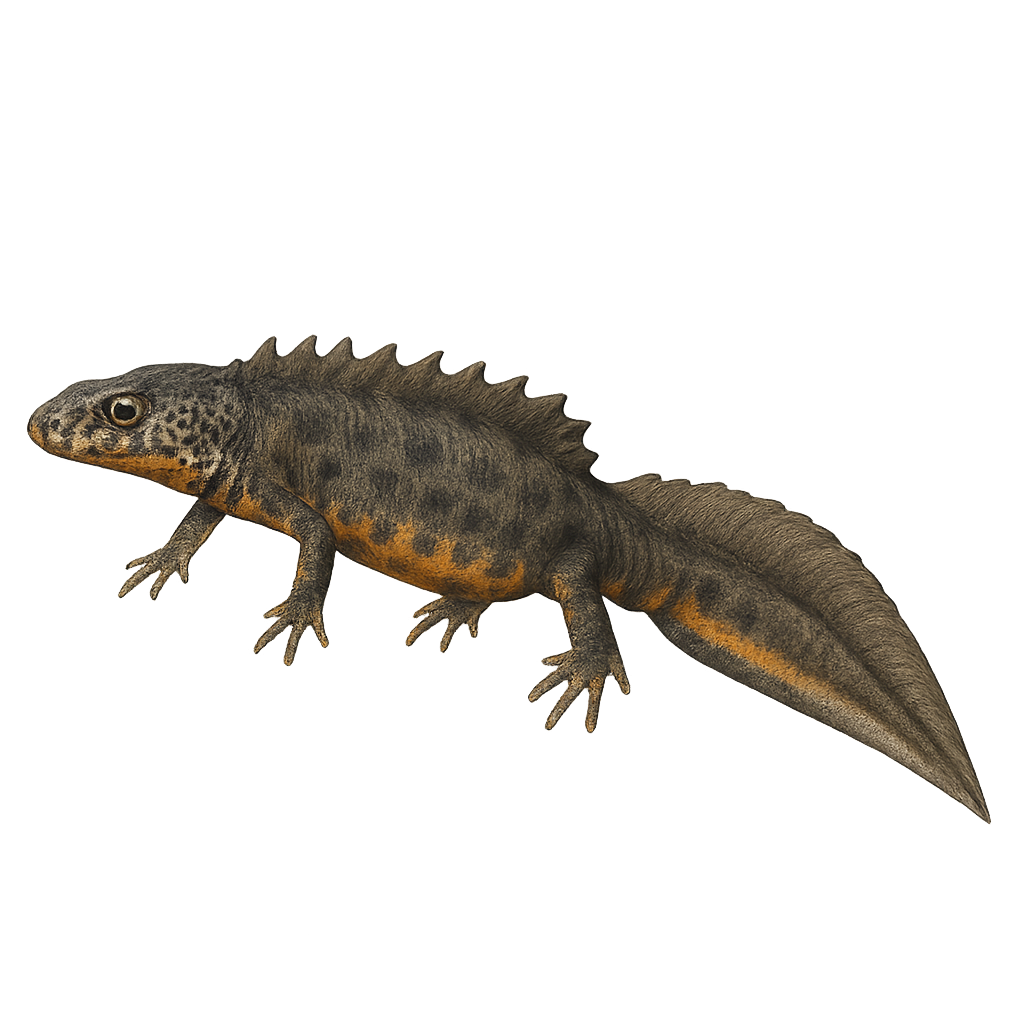Your wildlife photography guide.
Explore the italian crested newt in detail, study its behavior, prepare your shots.
Where to observe and photograph the italian crested newt in the wild
Learn where and when to spot the italian crested newt in the wild, how to identify the species based on distinctive features, and what natural environments it inhabits. The WildlifePhotographer app offers tailored photography tips that reflect the italian crested newt’s behavior, helping you capture better wildlife images. Explore the full species profile for key information including description, habitat, active periods, and approach techniques.
Italian Crested Newt
Scientific name: Triturus carnifex

IUCN Status: Near Threatened
Family: SALAMANDRIDAE
Group: Amphibians
Sensitivity to human approach: Suspicious
Minimum approach distance: 2 m
Reproduction period: April to May
Incubation: 13–15 jours
Births: April to May
Habitat:
Ponds, marshes, forests, grasslands
Activity period :
Mainly active at night, generally discreet during the day.
Identification and description:
The Italian Crested Newt, Triturus carnifex, is a species of newt in the family Salamandridae. It is characterized by its rough skin and prominent dorsal crest, especially visible in males during the breeding season. This newt typically measures between 10 and 16 cm in length. Its coloration ranges from brown to black, with lighter spots on the belly. It primarily inhabits wetlands, such as ponds and marshes, and is often found in nearby forests and grasslands. Although its population is stable, it faces threats from habitat destruction and water pollution.
Recommended lens:
Macro – adjust based on distance, desired framing (portrait or habitat), and approach conditions.
Photography tips:
To photograph the Italian Crested Newt, focus on twilight or nighttime hours when this amphibian is most active. Use a macro lens to capture the details of its rough skin and dorsal crest. Approach slowly and avoid sudden movements to prevent scaring it. A tripod can be helpful to stabilize your camera in low-light conditions. Finally, be mindful of the environment and avoid disturbing its natural habitat.
From knowledge to field practice
A species profile helps you understand an animal. In the field, the challenge is often different. Remembering your own observations.
The WildlifePhotographer app allows you to:
• record your personal observations
• note locations, dates, and behaviors
• revisit your field references over time
• build a private and long-term field logbook
The app does not provide observation locations.
It helps you organize what you actually observe, with respect for wildlife.

